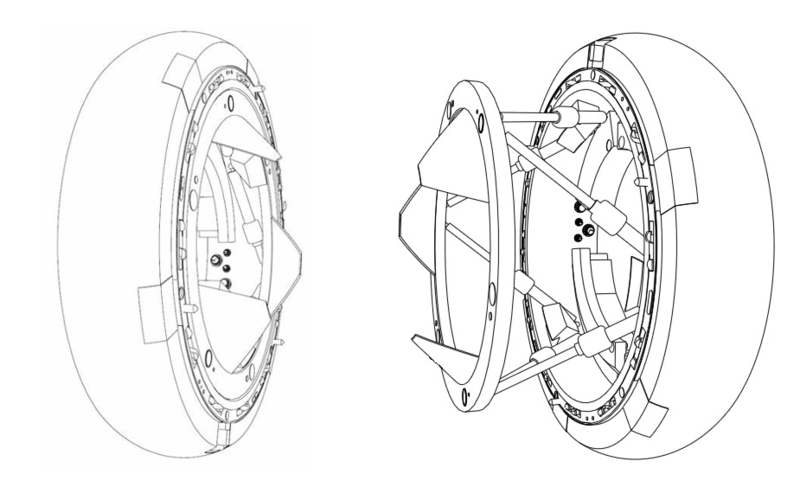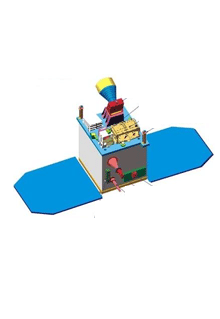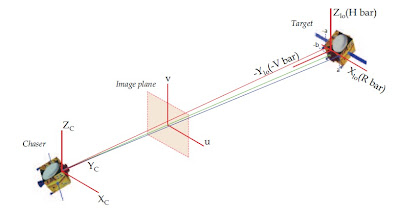Prashant12
Senior Member
- Joined
- Aug 9, 2014
- Messages
- 3,027
- Likes
- 15,002
For GSLV Mk-IIIWould that be the one they'll use on ULV?
http://www.isro.gov.in/update/20-ju...t-cryogenic-rocket-engine-successfully-ground
For GSLV Mk-IIIWould that be the one they'll use on ULV?
India Launched GSLV near and during G20 and post events.
PRC through North Korea conducted Nuke tests near and during G20. (tests spread over 10+ years).
Nuke tests are due by India. ISRO has shown to other departments no shyness anymore.

Awwww..Snap!!
A nuke test now would be the most counter productive decision we can take. W8 for us to atleast reach middle-income status before doing something that will CERTAINLY lead to sanctions and a loss of credibility, as well as an opportunity for PRC and PORKI.
Get real bro. We are a low-income country with gigantic potential. However our window for economic development is closing. Resources are running out. We cannot piss away our massive potential. We need foreign investment and we need to cooperate with the world. If we test a nuke now, we risk losing all that investment and all our demographic dividend of a 500 million strong workforce will turn into a demographic curse. There will not be enough jobs for the youth. The youth will then resent the society and we will have an immense socio-economic disaster on our hands. On the other hand, if we keep economic growth at a higher priority than nuclear capability, we will hit middle-income status by 2035-40 and continue a seamless transition to high-income status thereby avoiding the middle-income trap.Awwww..Snap!!
Sanctions...India never worried about sanctions when it wanted to do something critical for this nation.
Secondly..Credibility.. We should not put our national interests behind PLEASING anybody..because emotional perks such that will PAY ZILCH when push comes to shove.
In an eventuality..you are what you 'have' !!!
World shows respect to your reason and the reason behind the boldness...National security is one helluva reason !and India has maintained everything within "reasons".









Sure there's risk but there's risk with most things. There will be short term pain but the long term takeaways and benefits are too strong. You also talk like the economic neighborhood is always strong and has no recession and retraction. In 98 we tested did we come out stronger economically. R u saying in 98 we were stronger to 2016. If you want us to hold off and not test because of hardship ... Wait for the economic and economy problems to hit you. Having a nuke test will be a release valve. Also we need to know who are our real partners. We need to demonstrate that North Korea nuke tests are continuing and being abetted by PRC. No more joking.
A nuke test now would be the most counter productive decision we can take. W8 for us to atleast reach middle-income status before doing something that will CERTAINLY lead to sanctions and a loss of credibility, as well as an opportunity for PRC and PORKI.
India stood for herself and tested nukes when we had low income. This gave India more gigantic potential and opportunity for muscle flexing.Get real bro. We are a low-income country with gigantic potential.
World wont invest in India if It cant protect itself. National security is also vectored into economic brownie points.However our window for economic development is closing. Resources are running out. We cannot piss away our massive potential. We need foreign investment and we need to cooperate with the world.
Nuke tests is a matter of power projection. I have read somewhere that we don't need to test an actual nuke but go for Simulations. Cant assume how far that can be applied on real stuffs.If we test a nuke now, we risk losing all that investment and all our demographic dividend of a 500 million strong workforce will turn into a demographic curse. There will not be enough jobs for the youth.
In other words, develop nukes now and loose everything later or develop your economy now and develop nukes post-2050 (when we are on our way to become a high-income nation).
We do have lots of thread on this topic.You said India never worried about sanctions. Actually, the 1998 sanctions hit us hard and many weapons programs were delayed because our negotiations for technological import fell apart.
Stay under the radar until you are truly ready (economically) to challenge US and China. Then bring out your true spirit of a nationalist and conduct the tests when your economy is so integrated with the world that sanctions on you hurt them more than you.
BTW we are getting off-topic so open a new thread if you want to keep at it.
a lot is in the pipeline.. ISRO is really working on number of different rockets n engines.. and spaceX type landing is also there..There are so much more tidbits in that presentation including building a methane engine,

or how LVM3 (with 4T to GTO) can be modified by adding SCE-200 Semicryo and an extra Cryo stage to make a 4 Stage HLV (with 10T in orbit)


Or how the Human rate 2 stage rocket (SC500 [5*SCE200] + CE25 ) can be upgraded with more liquid boosters (based on SCE200) to put up, even more, heavier spacecraft into orbit (or possibly give earth escape velocity for a future manned mars mission)

So I think we need to think more than just ULV now , ISRO seems to have put up a lot more cards on the table, and I am particularly excited about propulsively retrieving stages like SpaceX, ISRO is not putting all it's eggs in one basket (winged reusability) which is good.

SRIHARIKOTA: India’s popularity among the space-faring nations took a giant leap on Thursday with the national space agency – Indian Space Research Organisation (ISRO) – successfully launching the first operational flight of GSLV Mk-II using home-grown cryogenic rocket technology, which only a few in the world have able to master. ISRO proudly declared that it has mastered the cryogens and is no longer ‘scared’.
But before the triumph, there was a hiccup. Due to an anomaly while filling fuel into cryogenic engine, the lift-off was delayed by 40 minutes. The initial launch was scheduled at 4.10 pm and the vehicle took off at 4.40 pm from the second launch pad. But, it registered zero difference in inclination, which is a rarity. Putting it in perspective with reference to past failures, ISRO officials said, the “naughty boy has turned out to be an adorable boy today”. This is the first hat-trick of GSLV and the seventh successful launch this year.
Designated as Cryogenic Upper Stage (CUS)-07 flown onboard GSLV-Fo5 from Satish Dhawan Space Centre at Sriharikota, the vehicle placed the 2,211 kg advanced meteorological satellite INSAT-3DR in its intended geostationary transfer orbit (GTO) after 17 minutes of journey.
The mission catapulted India into the multi-billion dollar commercial launcher market on a fully indigenous large rocket. ISRO declared that GSLV-F05 is fully operational and it is exploring new avenues to attract business. India becomes the sixth nation in the world after US, Russia, Japan, China and France to have tasted success with an indigenous cryogenic engine.

Congratulating the team, ISRO chairman A S Kiran Kumar said this successful launch gave ISRO engineers confidence to approach the first developmental flight of GSLV Mk-III using a more powerful cryogenic engine in December-January. “We are intending to conduct two GSLV Mk II launches every year. We have a large number of satellites in the line-up to put them into orbit using GSLV Mk II, including the SAARC satellite, Chandrayaan-2 and the ISRO-NASA missions,” he said.
The private sector played an important role in development of cryogenic technology and was associated with the ISRO from the start. For example, Godrej set up the rotary vacuum brazing facility in Mumbai. Brazing was a key and difficult technology, and setting up the facility took more than a year. MTAR Technologies Pvt Ltd made the turbo pump and some other components.
Director of Liquid Propulsion Systems Centre (LPSC) S Somanath, who was earlier heading GSLV, said ISRO was now very confident about GSLV and the cryogens. “After the failure of our first mission GSLV D3 in 2010, we did a detailed analysis of the problem and lot of tests were done and the three consecutive successes were a result of that. The knowledge base has improved significantly,” he said.
Nervous 40 minutesGSLV D3 failed to reach orbit due to a malfunction in the Fuel Booster Turbo Pump (FBTP) of the cryogenic upper stage. The next GSLV F06 mission same year was also a failure and the range safety officer has to destroy it after loss of control over liquid-fueled boosters. Later, GSLV D5 scheduled for August 2013 was aborted and rescheduled for January 2014 after a leak was spotted in the eleventh hour. Since then, ISRO never looked back and reached a stage where Antrix Corporation Limited, the commercial wing of ISRO, is putting the GSLV before the world as credible vehicle ready for commercial launches.
ISRO gearing up for manned missionThere was an air of anxiety and curiosity when the mission director R Umamaheswaran announced that the launch was delayed by 40 minutes. It led to a bit of speculation before the authorities put it on record that there was an anomaly detected while filling fuel into the cryogenic engine. The key authorisation was given at 4.31 pm, which indicated that all was set. While filling liquid oxygen, it was found a valve in the ground circuit opening and the gas was leaking. It was isolated through remote command.
Why cryogenic tech complex?ISRO chairman AS Kiran Kumar on Thursday hinted that the space agency was ready to take-up the manned mission. “We are developing various technologies that will send astronauts into the space. We have already carried out a space recovery experiment, re-entry module experiment, developing environmentally controlled chamber that sustain human life in space. There are more to follow. We are getting ready and it’s up to the country to tell us when and give the money,” he said indirectly sending a strong and positive message to the Centre. On inter-planetary mission, he said no project approvals have been taken so far. “We intend to carry out Chandrayaan-2 and Aditya mission first and then decide on inter-planetary projects.”
Marketing GSLV overseasA cryogenic rocket stage is more efficient and provides more thrust for every kilogram of propellant it burns compared to solid and earth-storable liquid propellant rocket stages, but is a very complex system because of its use of propellants at extremely low temperatures and the associated thermal and structural problems. Oxygen liquifies at -183 deg C and hydrogen at -253 deg C.
Next missionPSLV consolidated itself as small satellite launcher. GSLV comes as a high capacity vehicle. Globally, the total satellite business size is about $330 billion, of which $60 billion is satellite manufacturing and $5 billion is launch services component. Kiran Kumar refused to reveal the manufacturing cost of GSLV Mk II. “Definitely, the cost is competitive and people will be interested in using it for commercial launches.”
PSLV-C35 launch is scheduled later this month and the vehicle will carry eight satellites. One is SCATSAT-1, a continuity mission for Oceansat-2 Scatterometer to provide wind vector data products for weather forecasting, cyclone detection and tracking services to the users.
The first apogee raise maneuver of INSAT-3DR has been successfully carried out by LAM Engine firing for 2935sec from 08:39hrs IST on September 09, 2016.
Orbit Determination results from this LAM firing are:
apogee X perigee height was changed to 35882 km X 7001 km. Inclination is 9.02 deg. Orbital period is 12hr 49min.
After Successful Test of Reusable Vehicle, ISRO Has Further Plans for Slashing Launch Costs
In addition, ISRO was “very seriously” thinking of retrieving and reusing the core boosters of the GSLV and GSLV Mk-III in a SpaceX-like manner, according to him. The next generation Heavy Lift Launch Vehicle could also be designed with such reuse in mind.
The GSLV’s first stage, along with the four liquid-propellant strap-on boosters attached to it, account for almost three-fourths of the launch vehicle’s costs. “If we are able to recover and reuse [it], our reduction in cost will be maximum,” he said.
The GSLV’s payload would be halved if the the rocket’s first stage and strap-ons were manoeuvred back to the SDSC. However, the loss in payload would come to only about 80 kg if the stage soft-landed where it would naturally fall after separation. India could take advantage of the Andaman Islands and get the first stage to land there after equatorial launches from Sriharikota, Sivan remarked.
Loads of Info but slides are not readable. Anybody with sharper eyes ????There are so much more tidbits in that presentation including building a methane engine,

or how LVM3 (with 4T to GTO) can be modified by adding SCE-200 Semicryo and an extra Cryo stage to make a 4 Stage HLV (with 10T in orbit)


Or how the Human rate 2 stage rocket (SC500 [5*SCE200] + CE25 ) can be upgraded with more liquid boosters (based on SCE200) to put up, even more, heavier spacecraft into orbit (or possibly give earth escape velocity for a future manned mars mission)

So I think we need to think more than just ULV now , ISRO seems to have put up a lot more cards on the table, and I am particularly excited about propulsively retrieving stages like SpaceX, ISRO is not putting all it's eggs in one basket (winged reusability) which is good.
The launch of the latest satellite in the INSAT series has once again put India cryogenic rocket technology in focus. With it, India also now has the seventh largest constellation of satellites, the newest being the 42nd in the fleet. A majority of these satellites are operated for commercial purpose and are located in low-earth orbit.

Prime Minister Narendra Modi on Thursday applauded the ISRO scientists for the launch of advanced weather satellite INSAT-3DR onboard GSLV-F05, terming it as an exemplary achievement which made India proud.
“Congratulations to @ISRO scientists for time and again demonstrating top-notch skill, unparalleled dedication & remarkable determination,” Modi tweeted.
"Our space programme keeps making us proud with the exemplary achievements. Successful launch of INSAT-3DR is a moment of immense joy,” he added.
Thursday’s mission, the 10th flight of GSLV, assumes significance for the Indian Space Research Organisation as it is the first operational flight of the rocket fitted with the indigenous cryogenic upper stage.
INSAT-3DR, with a designed mission life of ten years, will provide service continuity to earlier meteorological missions and further augment the capability to provide various meteorological, search and rescue services.




